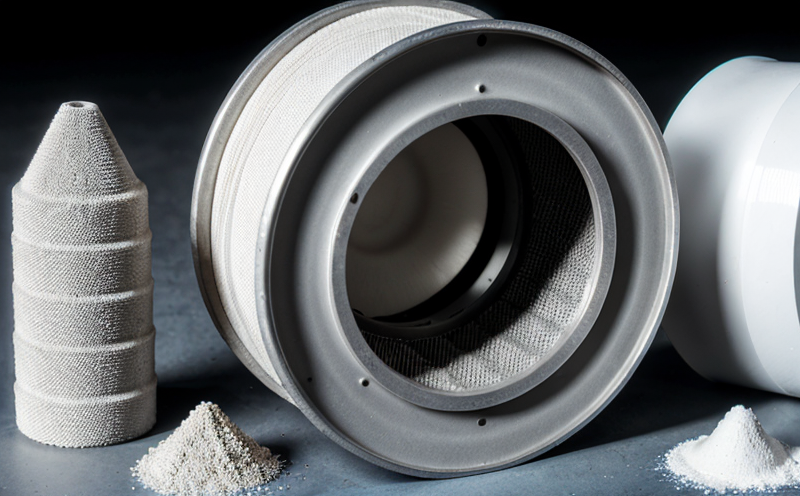IEC 61373 Shock and Vibration Compliance Testing
The IEC 61373 standard is a comprehensive set of guidelines for ensuring the reliability and durability of electronic components under conditions of shock and vibration. This testing is particularly critical in sectors like marine & ship equipment, where harsh environmental conditions can lead to catastrophic failures if not properly addressed.
Marine and ship equipment often operates in environments characterized by high levels of mechanical stress due to constant motion, impact, and vibration. Ensuring that the materials used in additive manufacturing meet IEC 61373 compliance is essential for maintaining the integrity and longevity of these systems. Additive manufacturing (AM) offers a unique opportunity to design parts optimized for specific applications while minimizing material waste, but it also demands rigorous testing to ensure that AM parts can withstand the rigors of marine use.
The IEC 61373 standard defines exposure levels in terms of shock and vibration parameters such as acceleration, frequency range, duration, and environment. Compliance with these standards ensures that equipment will perform reliably under expected operational conditions. For additive manufactured components used in shipboard electronics or structural elements, this testing is crucial to prevent failures that could compromise safety.
During IEC 61373 compliance testing, specimens are subjected to controlled shock and vibration environments that simulate real-world operating conditions. This process involves precise control over parameters like acceleration amplitude, frequency content, and duration of exposure. The goal is to evaluate the structural integrity and performance of parts under these stressors.
The test setup typically includes a shaker table or similar apparatus capable of generating controlled shock and vibration pulses. Specimens are mounted securely to ensure accurate application of forces during testing. Once the specimen has been subjected to the prescribed cycle, it is inspected for any signs of damage or degradation. Non-destructive evaluation techniques such as ultrasonic testing or magnetic particle inspection may be used to assess internal integrity.
Compliance with IEC 61373 extends beyond just mechanical performance; there are also considerations regarding electrical insulation and functionality. After exposure, the specimen must maintain its ability to function correctly within the intended application. This includes checking for continuity of electrical connections as well as ensuring that connectors remain secure despite exposure.
For additive manufactured components specifically designed for marine applications, achieving IEC 61373 compliance is paramount. By adhering strictly to the standards outlined in this document, manufacturers can guarantee their products' reliability and safety in challenging environments.
The testing process involves careful planning and execution to ensure accurate results. It requires precise control over environmental conditions such as temperature and humidity levels during exposure cycles. Additionally, post-test inspections must be thorough enough to detect even minor signs of material degradation or structural damage that could indicate potential performance issues under operational conditions.
Benefits
Compliance with IEC 61373 ensures that marine and ship equipment using additive manufactured components can withstand the harsh environmental conditions encountered at sea. This translates into increased product reliability, reduced maintenance costs, and improved safety for end-users.
- Enhanced Reliability: Ensures consistent performance across all units produced through additive manufacturing processes.
- Cost Savings: By identifying potential issues early in the development stage, unnecessary repairs or replacements are minimized post-installation.
- Safety Improvements: Critical components subject to extreme shock and vibration must meet stringent safety requirements; non-compliant parts could fail catastrophically during operation.
In summary, adherence to IEC 61373 helps manufacturers produce high-quality products that are dependable under challenging conditions. This not only enhances customer satisfaction but also contributes positively towards brand reputation and trustworthiness within the industry.
Why Choose This Test?
- Regulatory Compliance: Ensures that products meet international standards, facilitating easier market entry in multiple jurisdictions.
- Quality Assurance: Provides assurance that the additive manufacturing process produces parts with consistent quality and performance characteristics.
- Risk Management: Identifies potential weaknesses early in the design lifecycle, allowing for necessary modifications before production begins.
- Customer Confidence: Demonstrates commitment to safety and reliability, building confidence among clients who rely on your products.
By choosing IEC 61373 compliance testing, organizations can ensure that their marine & ship equipment meets the highest standards of quality and safety. This not only protects end-users but also enhances the reputation of the manufacturer in a competitive market.
International Acceptance and Recognition
The IEC 61373 standard has achieved widespread recognition among industries that operate in extreme environments. Its acceptance extends across various sectors, including aerospace, automotive, and defense, where robustness against shock and vibration is essential.
In the marine sector, compliance with IEC 61373 is particularly important given the demanding operational conditions faced by ships and offshore structures. By adhering to this standard, manufacturers can ensure that their products not only meet regulatory requirements but also perform reliably under challenging circumstances.
International recognition of IEC standards fosters global interoperability and collaboration between different entities involved in the design, manufacturing, and operation of marine equipment. This uniformity simplifies compliance processes for businesses operating across borders and contributes to safer maritime operations worldwide.
Moreover, compliance with these internationally recognized standards enhances product credibility, making it easier for manufacturers to gain acceptance from regulatory bodies and customers alike. It also facilitates smoother international trade by aligning national regulations with global best practices.





